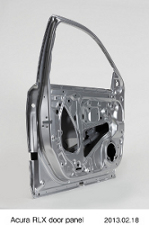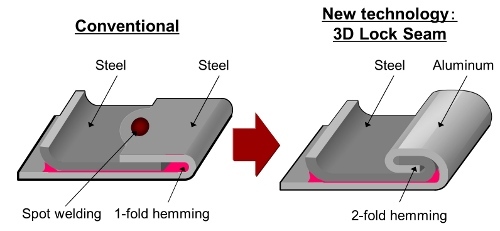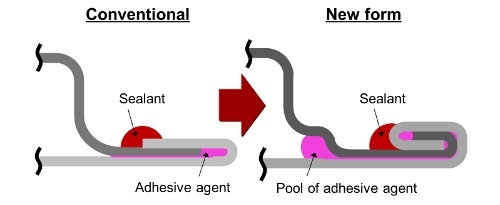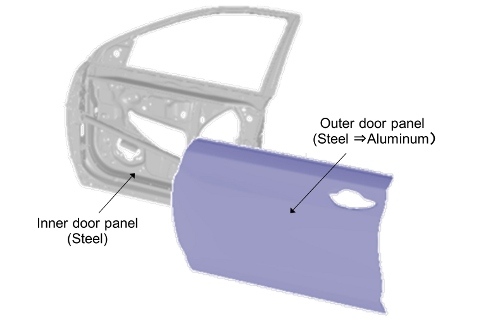 |
| March 12, 2013 | Volume 09 Issue 10 |
Designfax weekly eMagazine
Archives
Partners
Manufacturing Center
Product Spotlight
Modern Applications News
Metalworking Ideas For
Today's Job Shops
Tooling and Production
Strategies for large
metalworking plants
Wheels:
Honda develops new tech to join steel and aluminum

Door panel uses Honda's steel-to-aluminum joining tech.
Automakers are making some real inroads with new aluminum processes. Just a few months ago, GM announced that it had invented an industry-first aluminum spot welding technology expected to enable greater use of the lightweight metal on future vehicles.
Now it's Honda's turn.
Honda Motor Co. says that it has created a new technology to join steel and aluminum.
To go one better, Honda has already applied this technology to mass-production vehicles, initially to the North American version of the all-new Acura RLX. Plans to expand its use in other models are underway.
The first application of the technology was to join a new aluminum outer door panel (conventionally made entirely of steel) to the steel inner door panel.

To join together the dissimilar metals of steel and aluminum, Honda engineers had to develop three different technologies, including technologies to prevent corrosion (electrical corrosion) and thermal deformation caused by the different expansion rates of steel and aluminum:
1. Technology to join dissimilar materials: adoption of a "3D Lock Seam" (3DLS) structure, where the steel panel and aluminum panel are layered and hemmed together twice.
2. Technology to prevent electrical corrosion: adoption of highly anticorrosive steel for the inner panel and a new form that assures the complete filling of the gap with adhesive agent.
3. Technology to control thermal deformation: adoption of an adhesive agent with low elastic modulus (better ability to "stretch") and optimized position of the 3D Lock Seam.

The advantages of the new technologies include the elimination of the spot welding process required to join conventional steel door panels. Moreover, these technologies do not require a dedicated process; as a result, existing production lines can accommodate the new technologies.

In everyday use, Honda says that the new technology contributes to the improvement of fuel economy and dynamic performance of the vehicle by reducing door panel weight by approximately 17 percent compared to the conventional all-steel door panel. In addition, weight reduction at the outer side of the vehicle body concentrates the point of gravity further toward the center of the vehicle, contributing to improved stability in vehicle maneuvering.
Source: Honda Motor Co.
Published March 2013
Rate this article
View our terms of use and privacy policy
